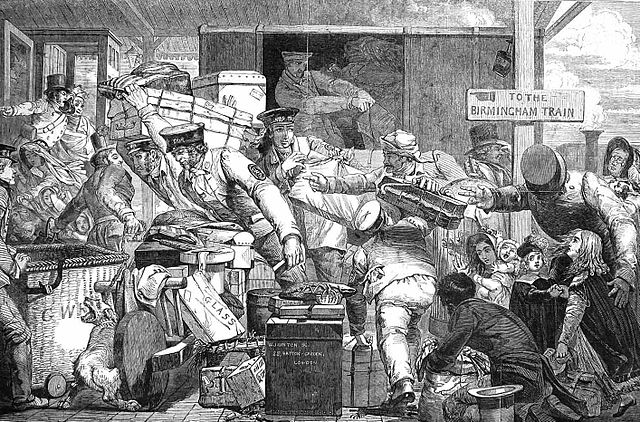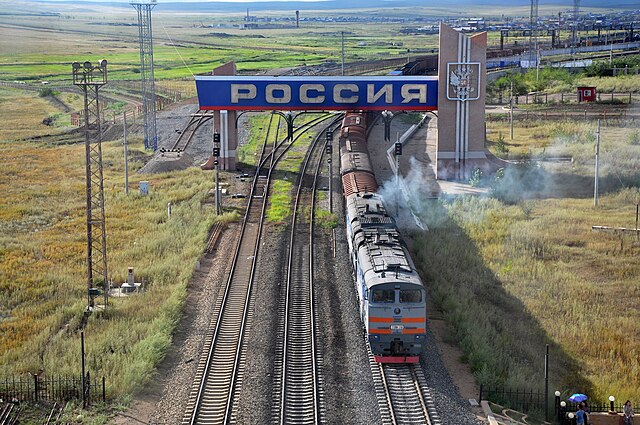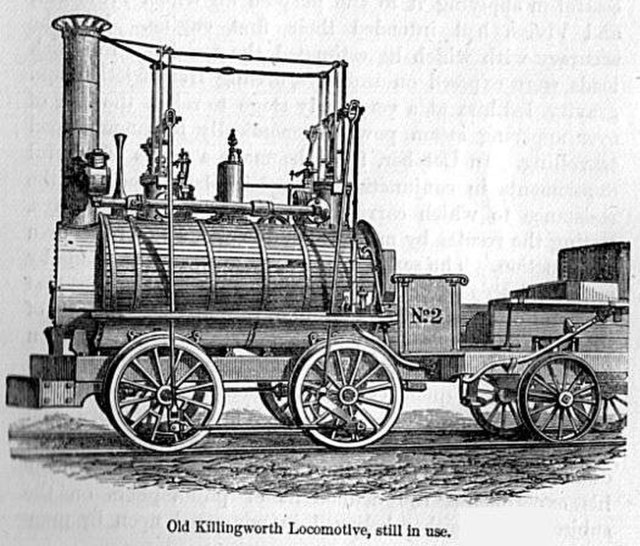With railways, a break of gauge occurs where a line of one track gauge meets a line of a different gauge. Trains and rolling stock generally cannot run through without some form of conversion between gauges, leading to passengers having to change trains and freight requiring transloading or transshipping; this can add delays, costs, and inconvenience to travel on such a route.
A cartoon depicting the "horrors of goods transfer" at the break of gauge at Gloucester in 1843
Bogie-exchange station in Ukraine
Variable gauge axles on a Spanish train designed for intercity travel to France
A train on 1435 mm standard-gauge track leaving Russia. It is bound for Manzhouli, China, having replaced its 1520 mm-gauge bogies with standard-gauge bogies at the bogie exchange yard in the distance.
In rail transport, track gauge is the distance between the two rails of a railway track. All vehicles on a rail network must have wheelsets that are compatible with the track gauge. Since many different track gauges exist worldwide, gauge differences often present a barrier to wider operation on railway networks.
Fish-belly cast-iron rails from the Cromford and High Peak Railway
An early Stephenson locomotive
Triple gauge, from left: 1,435 mm (4 ft 8+1⁄2 in), 1,000 mm (3 ft 3+3⁄8 in), and 600 mm (1 ft 11+5⁄8 in), on display at the China Railway Museum in Beijing
A cartoon depicting the horrors of goods transfer at the break of gauge at Gloucester in 1843







